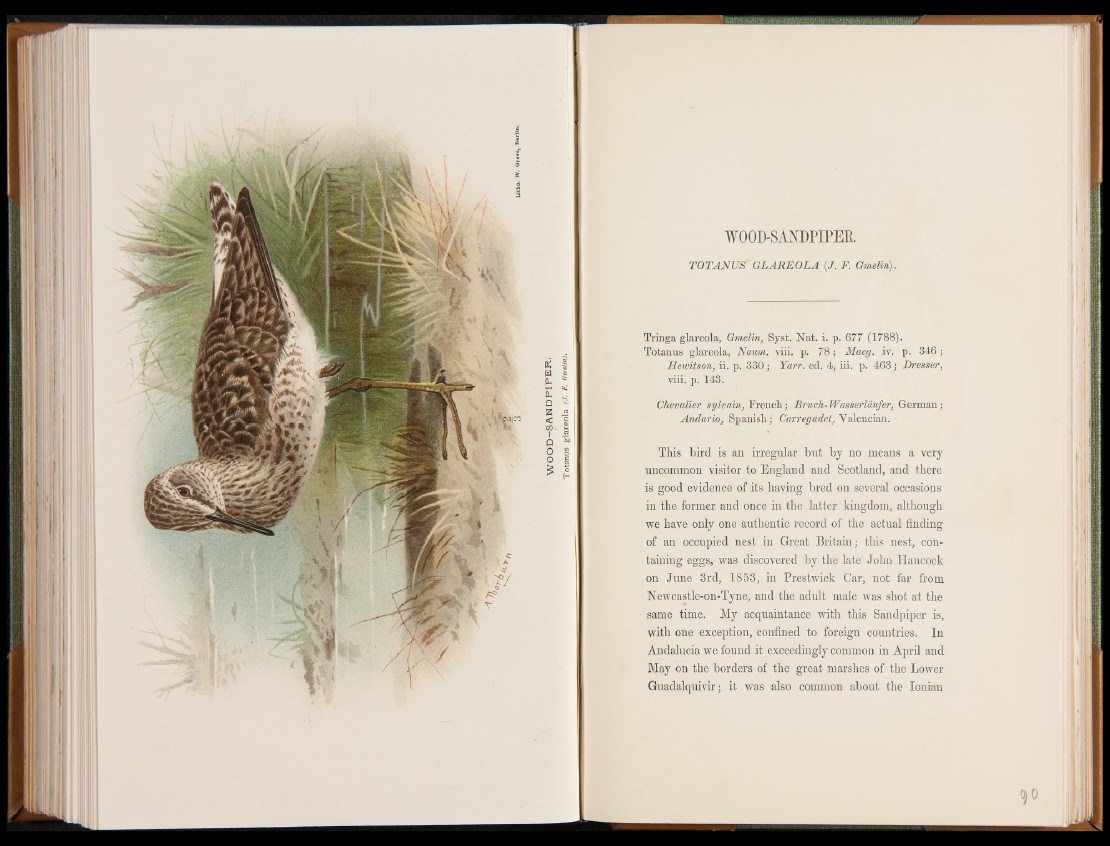
W O O D -S A N D P IP E R .
Totanus glareola (J- I'. Omelin).
WOOD-SANDPIPER.
TOTANUS GLAREOLA {J. F. Gmelin).
Tringa glareola, Gmelin, Syst. Nat. i. p. 677 (1788).
Totanus glareola, Naum. viii. p. 78; Macg. iv. p. 346;
Hewitson, ii. p. 330; Yarr. ed. 4, iii. p. 463; Dresser,
viii. p. 143.
Chevalier sylvain, French; Bruch-Wasserlaufer, German;
Andario, Spanish; Carregadet, Valencian.
This bird is an irregular but by no means a very
uncommon visitor to England and Scotland, and there
is good evidence of its having bred on several occasions
in the former and once in the latter kingdom, although
we have only one authentic record of the actual finding
of an occupied nest in Great Britain; this nest, containing
eggs, was discovered by the late John Hancock
on June 3rd, 1853, in Prestwick Oar, not far from
Newcastle-on-Tyne, and the adult male was shot at the
same time. My acquaintance with this Sandpiper is,
with one exception, confined to foreign countries. In
Andalucia we found it exceedingly common in April and
May on the borders of the great marshes of the Lower
Guadalquivir; it was also common about the Ionian